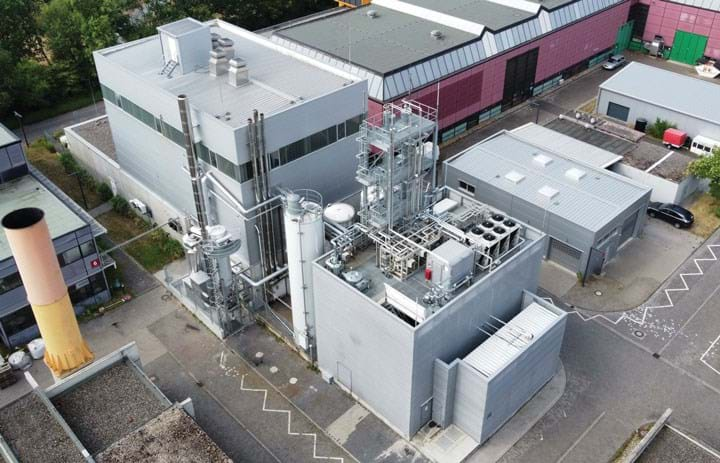Chemical Looping Diversity: Biofuels, Power, CCS and Chemicals

Adam Duckett and Amanda Jasi speak to engineers who are developing a variety of chemical looping processes
EARLIER this year, the partners in an EU project called Clara – or chemical looping gasification for sustainable production of biofuels – announced they had demonstrated their technology’s full process chain. The ambition of the €5m (US$5.4m) project is to show that chemical looping offers an efficient route for converting biomass waste into biofuels to help decarbonise hard to electrify modes of transportation such as aviation and shipping while avoiding competition for food-based feedstocks.
The full process involves taking biomass residues including wheat straw and forestry waste, pre-treating them, gasifying them in a chemical looping plant, and then purifying the resulting syngas for conversion into synthetic crude via Fischer-Tropsch.
At the heart of this process is the world’s largest operational chemical looping plant – a 1 MW(t) pilot facility at Technische Universität Darmstadt in Germany. Given this relatively small scale you’d be forgiven for thinking the concept is relatively new, yet the origins of thermochemical looping lie as far back as the 19th century when the brothers Quentin and Arthur Leon Brin patented a process for producing oxygen. However, as Lukas Buelens, a chemical engineer at Ghent University reported in a recent paper recounting key milestones in the history of chemical looping, patents for a wider variety of schemes began being filed in earnest from the 1950s and it’s the last two decades in which researchers have intensified the technology’s development (https://doi.org/ggb62v).
Among these researchers is Bernd Epple, director of the Institute for Energy Systems and Technology at Darmstadt. He joined the university 18 years ago after a career in industry where he built, managed, and led research into power plants.
His team’s system consists of two coupled circulating fluidised bed reactors. A metal oxide travels between the two reactors working as an oxygen carrier. It shuttles oxygen to the fuel reactor where it’s released for use in the gasification process, and then the reduced metal is separated from the offgases via a cyclone and recirculated back to the air reactor where it’s re-oxidised and ready to ride the loop again.
Epple says one of the key benefits of the process is that it eliminates the need for an air separation unit which provides the pure oxygen required for conventional gasification schemes.
“Capital expenses are very high for building an air separation unit. Also the operational costs are very high. You have to cool down the air to -200 °C. So it’s very energy intensive. These things are not necessary with chemical looping. You replace the air separation unit with a reactor, and just take the oxygen out of the air.”
Darmstadt’s 1 MW(t) pilot consists of a 9m tall air reactor with a 600 mm inner diameter operating up to 1050°C. It is connected to an 11m tall fuel reactor with an inner diameter of 400 mm operating up to 950°C. Epple and his colleagues published a paper in 2021 describing the design of the plant, calculating the heat and mass balances required for autothermal chemical looping gasification of biomass residues, and the recommended parameters for process control (https://doi.org/gq9t9x). As of February, the plant has operated autothermal chemical looping gasification for around 130 hours.
Asked about any further benefits of the scheme, Epple says that the ilmenite ore they have used as an oxygen carrier is abundant, stable, non-toxic and when it reaches the end of its operational life it could be sold for use in steel production.
“Another benefit is that we can use [biomass] waste and we don’t have to grind it. We can directly take pieces measuring several centimetres and feed it into the reactor. The fuel preparation is easy.”
Epple expects the chemical looping scheme for gasification will be commercialised in the next five years. He is presently working with Gidara Energy in the Netherlands and says there are discussions underway to scale up to 100 MW.
“It works. It’s very robust. We are convinced that this can be commercialised.”

Recent Editions
Catch up on the latest news, views and jobs from The Chemical Engineer. Below are the four latest issues. View a wider selection of the archive from within the Magazine section of this site.




